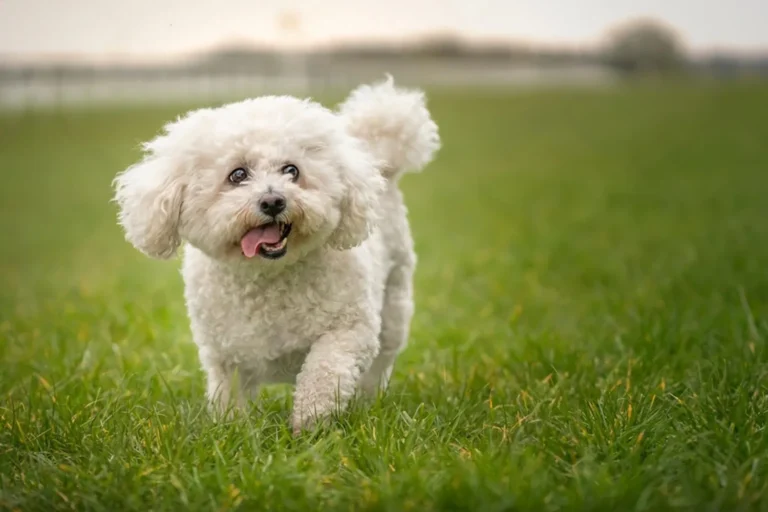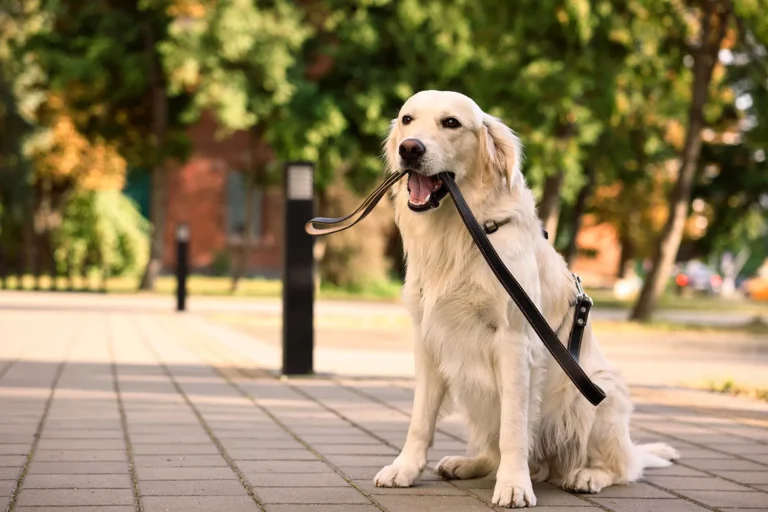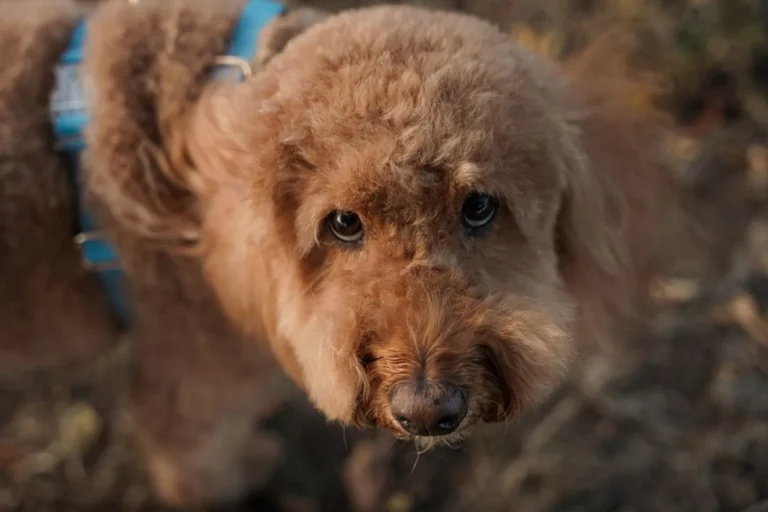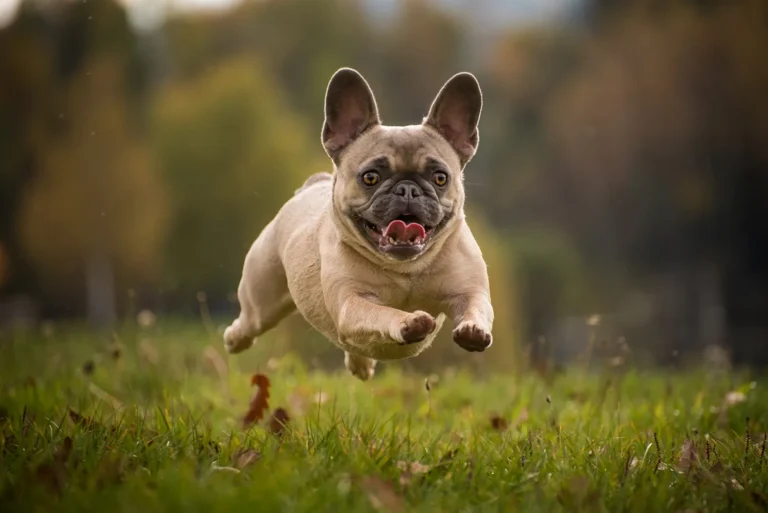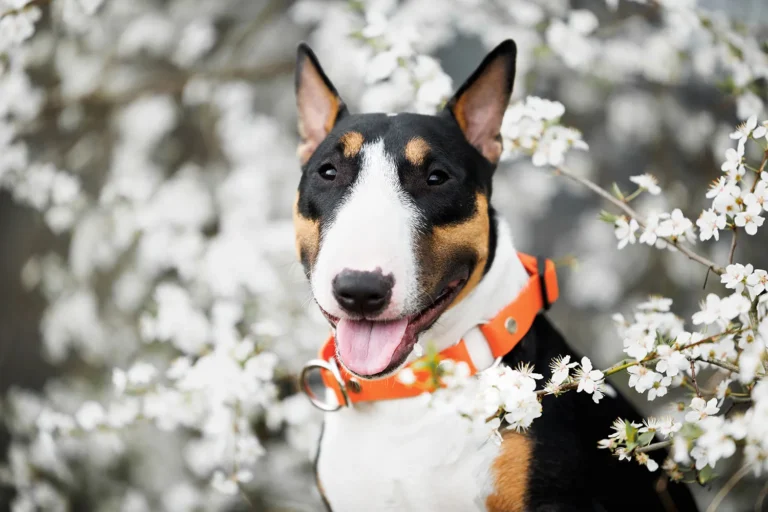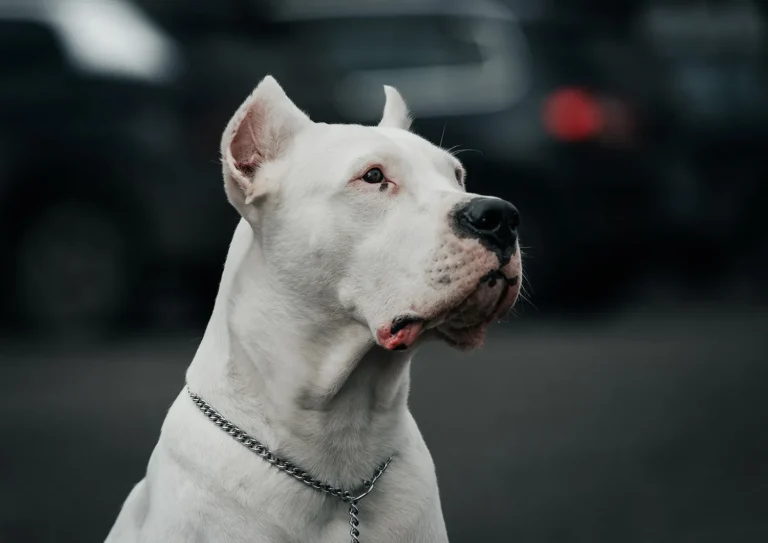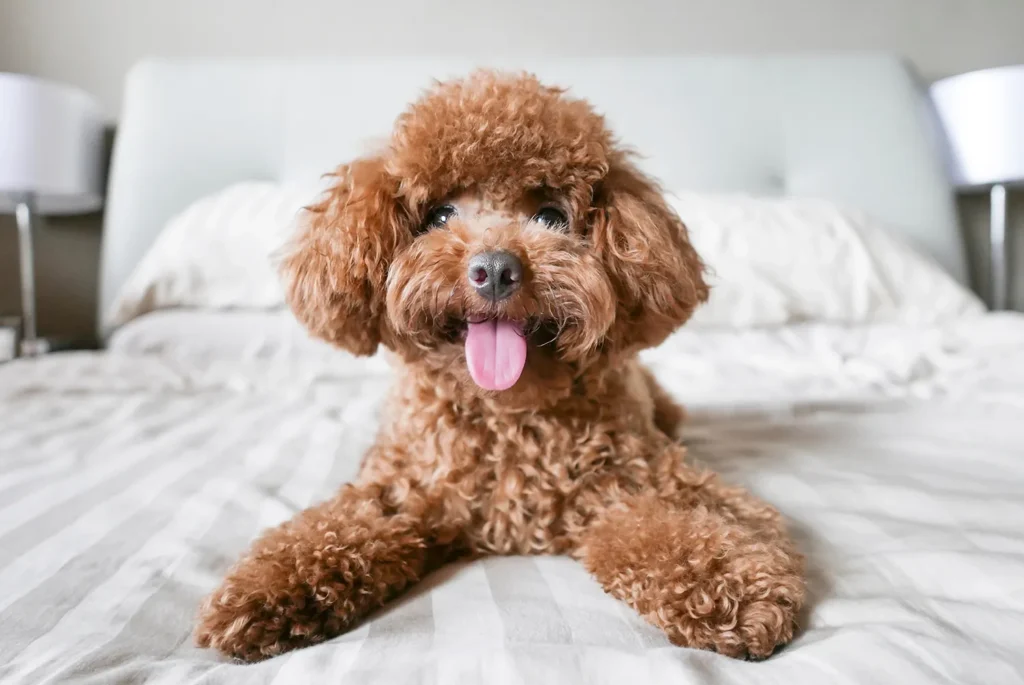
If you want a pint sized companion who’s cute, fluffy, and full of personality, a Toy Poodle is a delightful choice. They’re tiny but surprisingly clever, eager to please, and quick to learn my little guy mastered “shake” in two days and now prances around like he’s on a runway. They’re also low shedding and fairly apartment friendly, which makes life a bit easier if you’ve got mild allergies or limited space.
A few tips from experience: plan on regular grooming every 4-6 weeks and quick brush sessions a few times a week to keep that soft coat from matting. I once tried trimming my poodle’s bangs at home and let’s just say he rocked an uneven fringe for a week but he still looked adorable. Give them daily walks and brain games; puzzle toys are a hit. They love being with their people, so set a routine, practice crate time, and try not to leave them alone for long stretches. If you’re ready for cuddles, giggles, and a surprisingly smart sidekick, a Toy Poodle might be the perfect fit.
History and Origins of the Toy Poodle
If you picture Toy Poodles as dainty lap dogs, you’re only seeing the last chapter of a very action packed story. Their roots are in muddy marshes and chilly ponds, where early Poodles earned their keep as tireless water retrievers. Many historians point to Germany, where the name likely comes from puddeln, meaning to splash very fitting once you’ve seen a Poodle launch into a lake with zero hesitation. I still remember a Standard Poodle I met at a park in Vermont who would stand on the shoreline quivering with excitement until his person threw the dummy. The second it hit the water splash off he went.
There’s also a strong French thread in the Poodle tapestry. Some believe they descended from the Barbet, a shaggy French waterdog with the same curly, waterproof coat. And they weren’t alone in this watery work; Europe had a whole team of specialized waterdogs. The English Water Spaniel in Britain, the Barbet in France, and the Wetterhoun in the Netherlands were all prized for fetching shot waterfowl and even for recovering lost bolts and arrows back when hunters used crossbows. That famous Poodle “lion clip”? It wasn’t just fashion. The trim kept joints and organs warm while preventing heavy fur from weighing the dog down in water.
Over time, Poodles were bred in a range of sizes for different jobs and lifestyles: the sturdy Standard, the somewhat lesser known Medium, the snappy little Miniature, and eventually the Toy. The Toy Poodle really took off in the early 20th century, as city living made a smaller, apartment friendly companion especially appealing. I’ve seen old black and white photos of chic Parisians strolling the boulevards with tiny Poodles at their heels, and it’s easy to imagine how quickly they became the darlings of urban life.
Even then, “companion” didn’t mean “idle.” Toy Poodles proved irresistible to traveling circus troupes thanks to their quick wits, portable size, and love of learning. A street performer I watched in a French market once had a little Poodle who could hop through hoops, balance on a barrel, and bow to the crowd all for a bit of sausage. Their noses were put to work too: some Toys were trained to sniff out truffles, which takes patience, precision, and a good sense of reward. That talent translates beautifully to modern life. If you bring a Toy Poodle home, try scent games hide a few treats under cups or tuck a toy behind the couch and let them “hunt.” Mine lights up when I say, “Find it!” and trots around like a tiny four legged detective.
Today, Toy Poodles are beloved companions first and foremost, but their history still shows. They’re clever, eager, and far more athletic than their size suggests. A little brain work, a touch of training flair, and the occasional splash in a kiddie pool will make them feel like they’re back doing what they were born to do only now, on your living room stage.
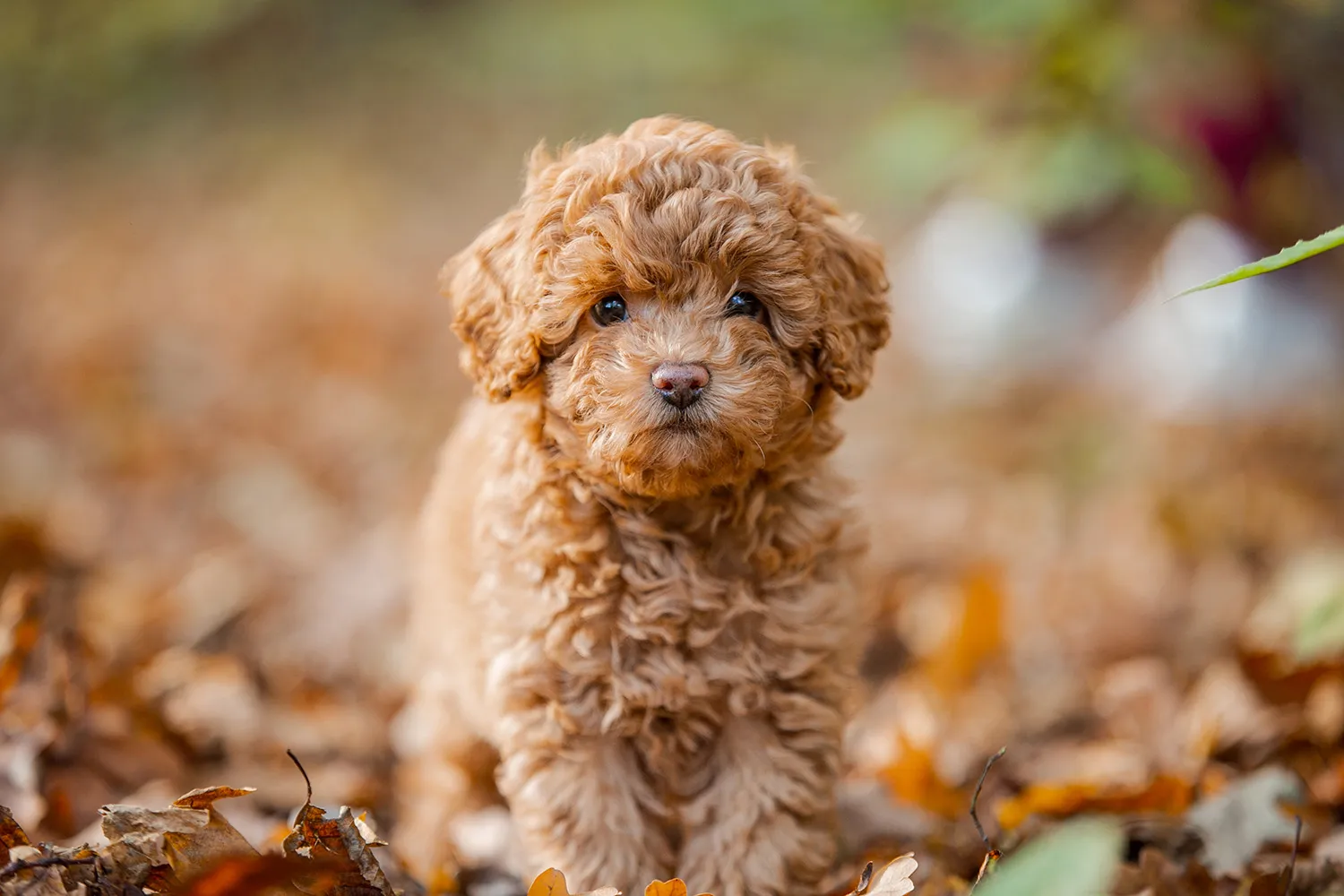
What Is a Toy Poodle, Really?
Despite the cute name, a Toy Poodle isn’t a separate breed at all it’s the smallest size within the Poodle family. Think of them as pocket sized versions of the same clever, curly companion you see in the Standard and Miniature varieties. To be categorized as a Toy Poodle, an adult should stand no taller than 27 cm at the shoulder, and most tip the scales around 4 kilograms. For a visual, that’s just under a school ruler tall and about the weight of a small bag of flour. I once stuck a Post it on my doorframe to check my little guy’s height he wiggled with pride like he’d just passed an exam.
What I love is how much “big dog” personality fits into that petite frame. They’re easy to scoop up for a car ride or a cuddle on the couch, but they still have that sharp Poodle brain and bounce. My advice if you’re considering one: enjoy the convenience of their size, but be mindful of it too. Use stairs or a ramp for the bed, watch those enthusiastic leaps off the sofa, and teach kids to handle them gently. And if someone says “teacup,” just smile Toy is the official smallest size. Same Poodle charm, just in a portable package.
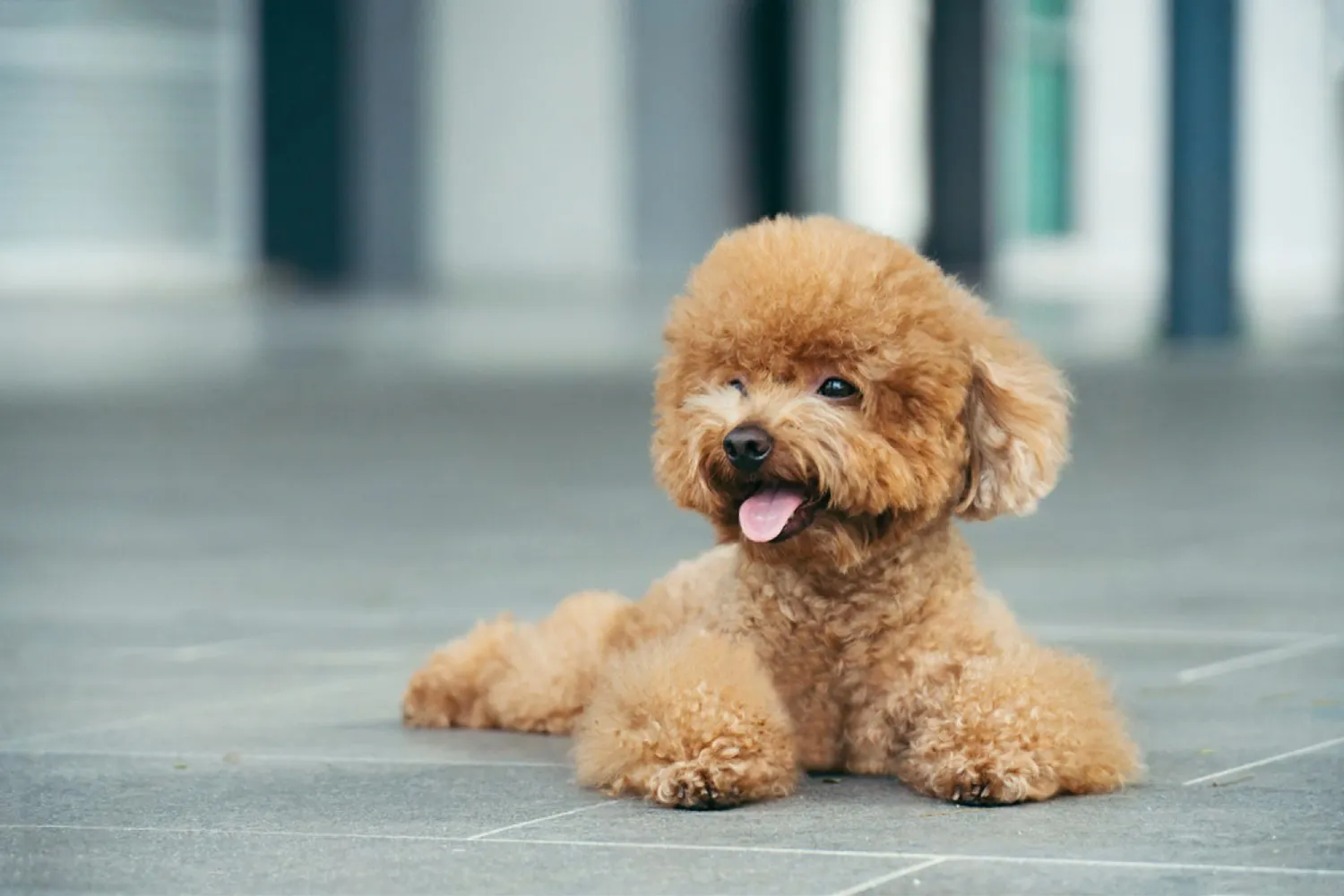
Who Is a Toy Poodle Best For?
Toy Poodles are tailor made for people who want a true companion dog someone small, sociable, and always in on the action. They’re wonderful with families and usually get along nicely with kids and other dogs. That said, their petite size means rough and tumble play can be risky. I always tell visiting kids to do “floor time greetings” with little dogs sit down, hold out a hand, and let the dog come to you. Older children who understand gentle handling tend to be a perfect match.
Because they’re delicate, Toy Poodles fit especially well in quieter households think older kids, singles, couples, or retirees. They’re easy to carry, adapt well to apartments, and travel like champs. I once watched a friend’s Toy Poodle trot into a pet friendly cafe like she owned the place, then curl up on a lap and doze through the entire brunch. They’re also considered hypoallergenic they don’t shed in the usual way and produce less dander so folks with sensitivities often do well with them. A coworker with allergies used to visit my house just to cuddle my neighbor’s Toy Poodle without a single sniffle. Just remember, their coat still needs regular brushing and trims to keep that teddy bear look.
If what you want is closeness, Toy Poodles deliver. They adore cuddles and have that sweet, “velcro dog” vibe. I set a little bed by my desk for quick mid day snuggles and it became the favorite spot in the house. They’re happiest when included in daily life gentle walks, puzzle toys, and lots of lap time. For homes that can offer affection, supervision around boisterous play, and a calm routine, a Toy Poodle is an irresistibly loving fit.
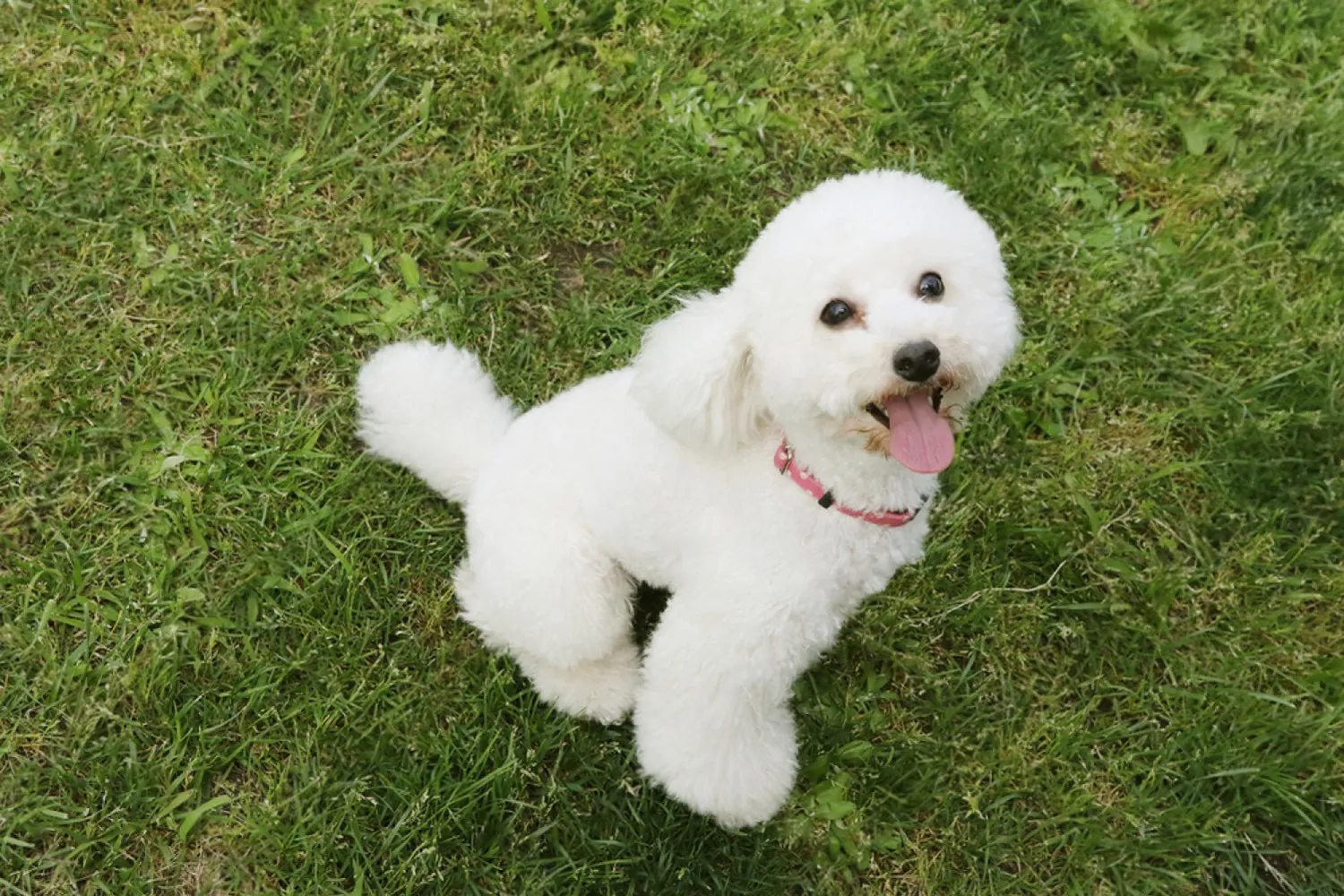
Toy Poodle Grooming & Shedding
If you’re sniffle prone, a Toy Poodle can feel like a breath of fresh air they don’t shed, which is a gift for allergy sufferers. But that lovely, curly coat still needs regular TLC. I learned this the hard way with my neighbor’s tiny poodle, Pico. He never left hair on the couch, but turn your back for a week and those curls tried to knot themselves into little dreadlocks behind the ears and under the collar.
Because their coats are so curly and dense, haircuts are best left to a pro. A skilled groomer can keep the coat at a practical length and prevent mats from forming in tricky spots like the armpits and around the tail. I once tried to “even up” a fringe between appointments and created something that looked like a lopsided beret. Since then, I book the pros and set reminders so we don’t miss a visit.
Daily brushing is the secret sauce. Five to ten minutes with a slicker brush and a metal comb will do wonders. Work in layers and pay attention to friction areas behind the ears, under the harness, and along the legs. A light spritz of detangling spray helps the comb glide and keeps the coat from breaking. Plan a proper bath at least every six weeks with a gentle dog shampoo and conditioner; dry thoroughly and brush as you go to keep the curls fluffy and tangle free. I like to make it a mini spa day: a few high value treats, a calm voice, and a quick check of nails and ears. Ask your groomer to show you how to do small touch ups between appointments face, feet, and sanitary areas so your Toy Poodle stays tidy without stress.
One last tip: start the routine young and keep it positive. A breeder I spoke with in California swears by two minute “practice brushes” while the kettle boils. It sounds simple, but it turns grooming from a chore into a habit and with a Toy Poodle’s glamour curls, that habit pays off every single day.
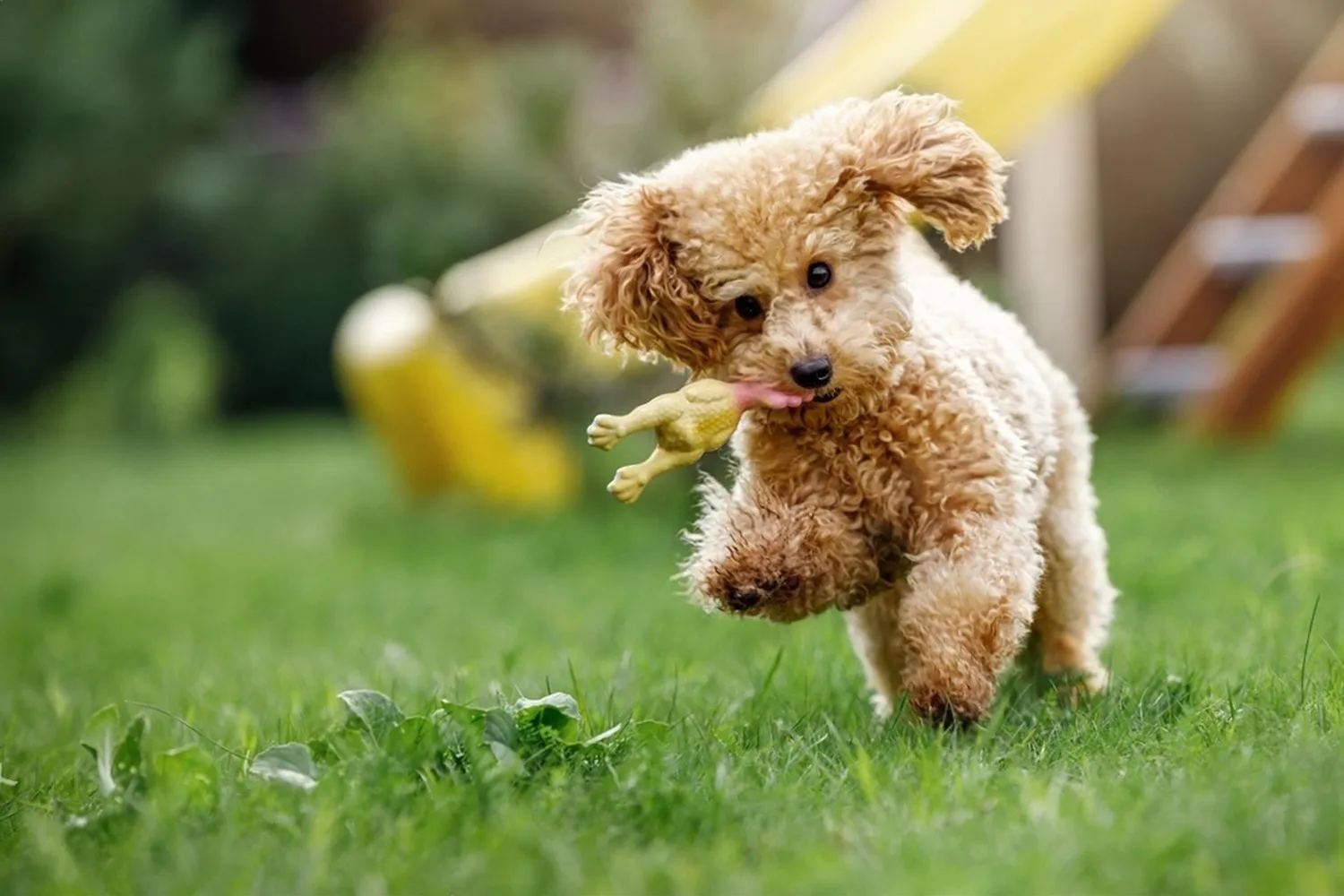
Do Toy Poodles bark a lot?
Short answer: they can be chatty, especially if they’re alone or if someone new is near the house. It’s not aggression more like a tiny, curly haired security system announcing, “Hey, something’s happening!” My neighbor’s Toy Poodle, Pip, used to alert us every time the mail carrier blinked in our direction. It was endearing… and a little loud.
These little dogs are very social and genuinely love being around their people, so some barking when you head out is pretty normal. What helps a ton is setting them up for a good nap. I like to do a quick sniffy walk and a few minutes of training games before I leave. When I dog sat a Toy Poodle named Miso, a 20-minute “sniffari” plus a stuffed frozen Kong turned her goodbye chorus into a quiet snooze.
Training makes a big difference. I teach a calm “quiet” cue and pay generously for silence, especially after a knock or the doorbell. Short practice absences help too step out for a minute, come back while the dog is quiet, repeat and slowly build time. Little tricks like closing curtains to block sidewalk drama, playing soft white noise, and giving a safe, cozy spot can reduce alert barking. Ask guests to ignore the dog for the first minute so excitement stays low. And if the barking feels persistent or anxious, a positive reinforcement trainer can help tailor a plan. With the right routine, most Toy Poodles learn to save their voice for the truly important announcements.
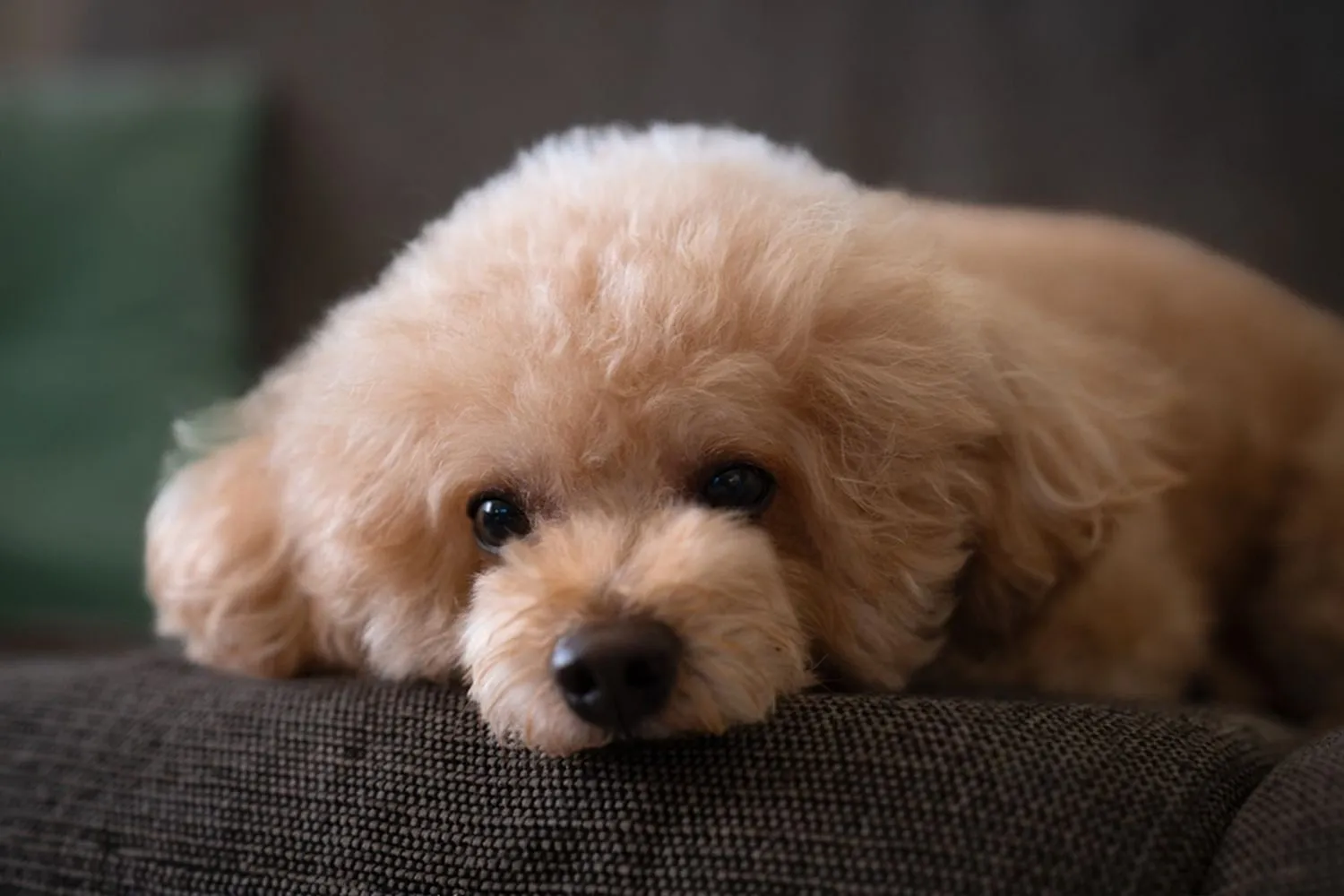
Average Weight and Height of a Toy Poodle
Toy Poodles grow fast at first like little popcorn kernels popping up in the pan. Those first three months are a whirlwind of change, and then things start to slow down, tapering off somewhere between nine months and a year. In those early weeks, males are usually a touch bigger, coming in around 1-2 kg for the first three months, with females a bit lighter. By about six months, you’ll likely see males between 1.5-4 kg and females around 1.3-3.2 kg. After the first birthday, most males settle in the 2-5 kg range and females around 1.8-4 kg. They can add a bit of muscle over the following year, and by about two years old, they tend to level out at roughly 2.3-4.7 kg for males and 2-4.5 kg for females. https://en.wikipedia.org/wiki/Poodle#Size_varieties
Height wise, don’t be surprised if they sprout quickly. A Toy Poodle pup might stand about 10-13 cm at the shoulder at four weeks, grow to around 20 cm between eight and ten weeks, and reach about 25 cm between six months and a year (that’s close to 10 inches). I like to measure at the withers the top of the shoulders using a hardcover book and a tape measure. It’s not glamorous, but it works. And for weighing at home, I step on the bathroom scale with my pup, then subtract my own weight. I kept a little growth chart on the fridge; it made those tiny milestones feel big and helped me spot any sudden changes.
If you’re wondering whether your pup is on track, remember that every dog grows at their own pace. My friend’s male Toy Poodle looked petite until about eight months, then filled out seemingly overnight. Meanwhile, my little girl stayed featherlight but built muscle as we added short, playful walks and a few puzzle toys. What mattered most was her body condition: I could feel her ribs with light pressure, see a nice waist tuck from above, and she had plenty of energy. If you aren’t sure, ask your vet they can guide you on whether your pup’s weight suits their frame.
A quick tip on keeping growth healthy: stick to measured meals, keep treats modest, and avoid too much jumping while joints are still developing. And don’t compare your Toy Poodle to the one at the park coat fluff alone can make a tiny dog look twice the size. These are averages, not strict rules. If something feels off or your pup falls far outside the ranges, a vet visit will give you peace of mind and a plan.
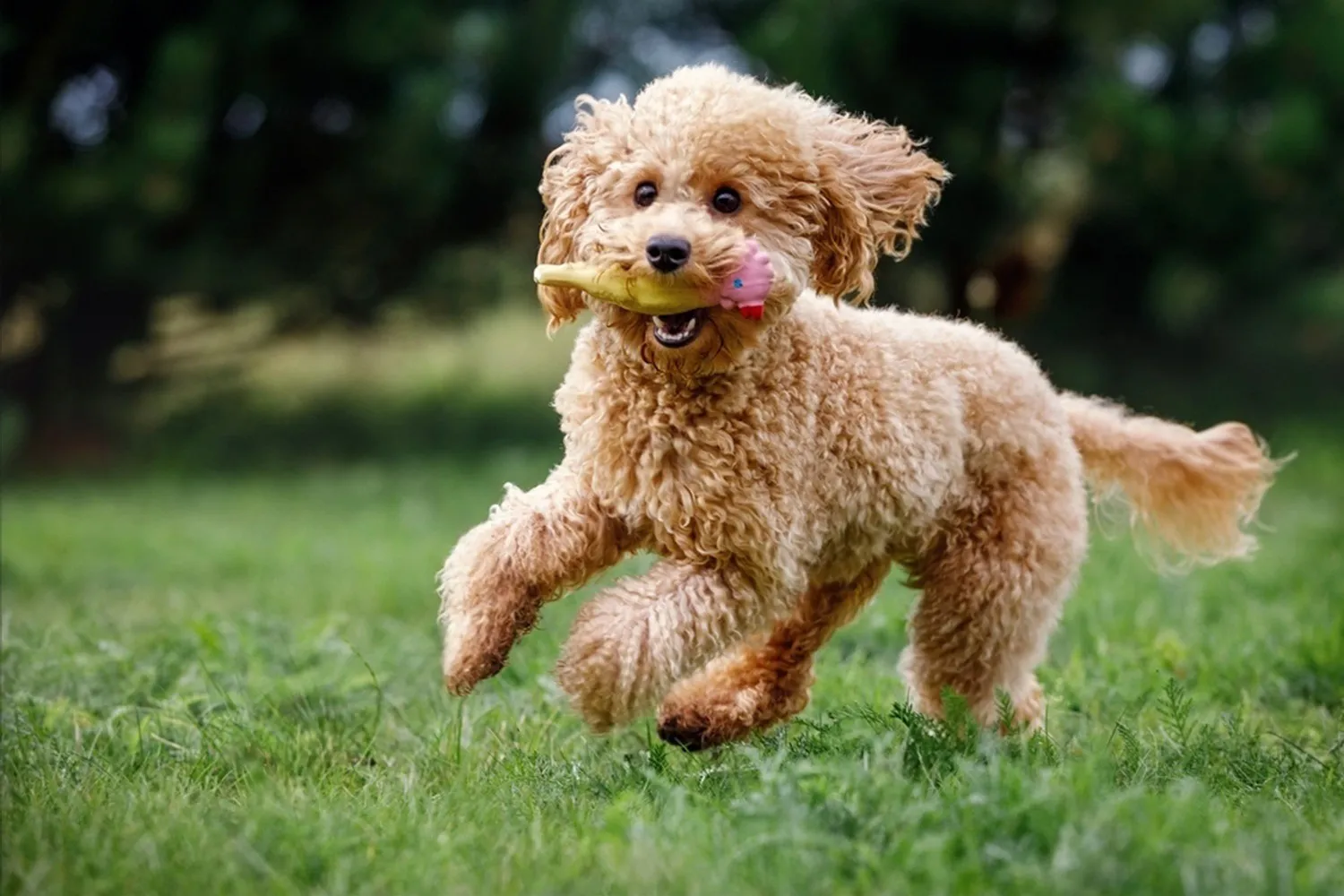
Are Toy Poodles easy to train?
Short answer: yes Toy Poodles are wonderfully smart and usually eager to learn. That brainy little face isn’t just for show. With consistency and kindness, they pick up cues quickly and genuinely enjoy working with you. I remember the first time I tried a clicker with a friend’s Toy Poodle named Noodle; by the end of the weekend, Noodle could sit, spin, and touch my hand on cue. They thrive on positive reinforcement, so keep treats tiny, praise enthusiastic, and training sessions short and fun.
Mental stimulation matters just as much as physical exercise for this breed. Regular walks, playtime, and puzzle toys help channel that clever energy into good habits. I like to sprinkle in mini training moments throughout the day asking for a sit before meals or a down before opening the front door. It keeps things light and builds great manners without feeling like “school.” Start early with the basics you’ll depend on later: recall, bite inhibition, and toilet training. For recall, I practice on a long line with high value treats and make coming back the best party in town. For mouthy moments, I calmly swap fingers for a chew toy and praise when teeth land on the right thing. Toilet training goes faster with a routine same door, same cue, and a reward the second they finish. A crate helped me, too, as a cozy, safe spot and a big aid in building a schedule.
The biggest “gotcha” with Toy Poodles is that their smarts can work against you if they get bored. Keep sessions upbeat, end on a win, and be consistent with your cues. Do that, and you’ll have a polite, quick learning companion who’s a joy to live with and show off a little at the park.
How Do Toy Poodles Behave? A Look at Their Temperament and Personality
Think smart, sprightly, and sweet. Toy Poodles are steady natured little companions who love to play and learn, and they pick up on routines and cues faster than you’d expect. I once dog sat a toy poodle named Milo who figured out “spin” in two short sessions and then offered it every time he wanted a treat cheeky, but charming. They thrive on games, short training bursts, and puzzle toys that let their brains work as much as their paws.
Around new people, they can be a touch cautious at first, which I actually appreciate it’s like they’re reading the room. Give them a gentle introduction, let them sniff, and a couple of calm minutes later they’re usually leaning in for ear scratches. A pocketful of treats and a relaxed voice go a long way. They bond closely with their people and often like to be right by your side; mine would give a polite “woof” when the mail arrived, then settle as soon as I said “okay.” With kindness, consistency, and a bit of daily mental play, Toy Poodles show their best: even tempered, lively, and endlessly teachable.
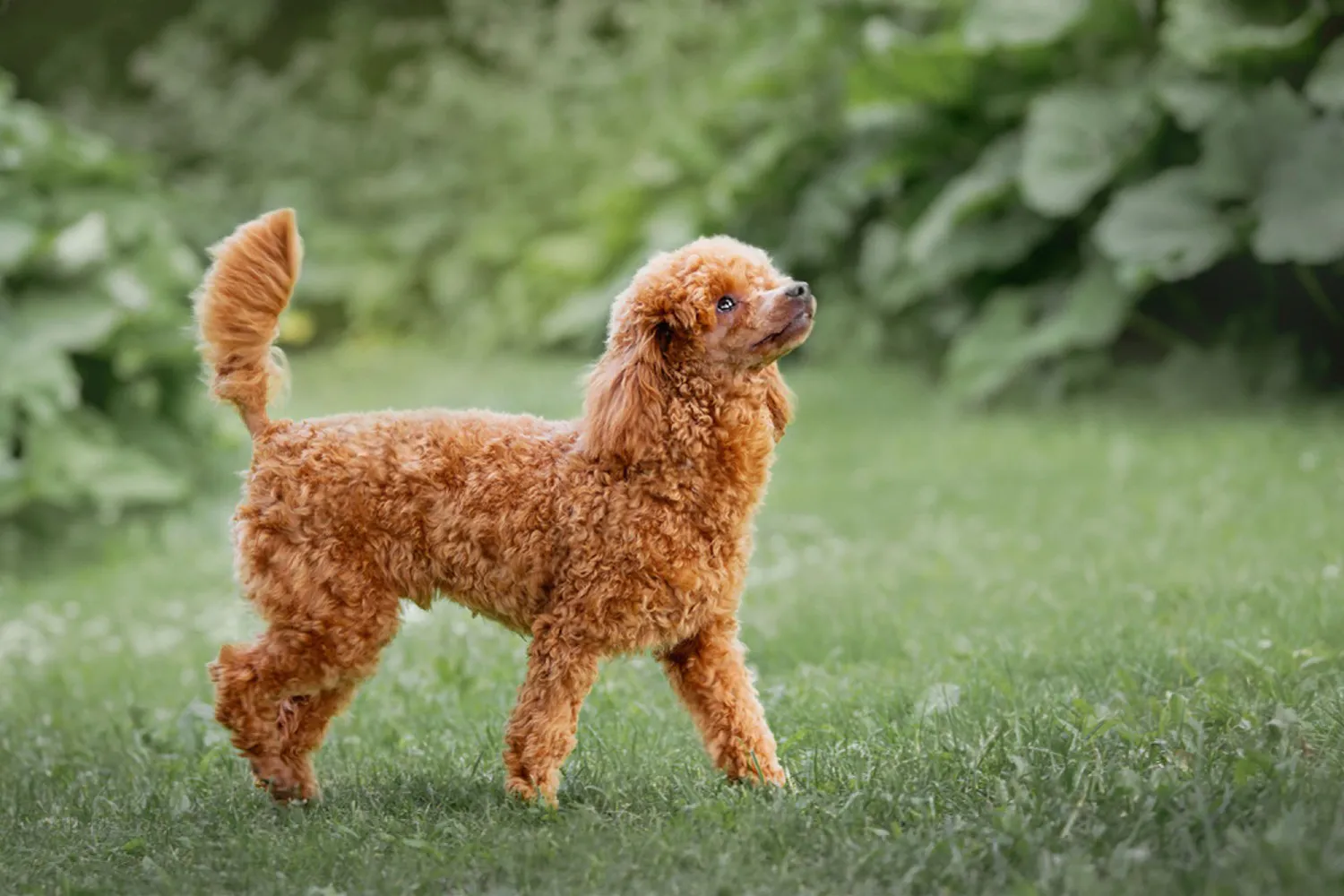
Do Toy Poodles Have Common Health Issues?
Toy Poodles are generally healthy little dynamos and often live long, happy lives. That said, like any breed, they do have a few health concerns worth knowing about so you can spot things early and keep your pup feeling great. I always say a little knowledge (and a good relationship with your vet) goes a long way.
Hip dysplasia can crop up even in small breeds, and it basically means the hip joint doesn’t fit quite right. You might notice stiffness after naps, reluctance to jump, or a bunny hop run. Keeping your Toy Poodle lean is the best gift you can give those joints. I put a tiny set of steps by my sofa and bed so my little jumper doesn’t launch herself like a cannonball. Nonslip rugs, shorter play bursts instead of high impact leaps, and asking your breeder about hip screening are smart moves. Some folks also find joint supplements helpful chat with your vet about what’s appropriate.
Eyes are another area to keep an eye on (pun fully intended). Progressive Retinal Atrophy affects vision over time, often starting with trouble seeing in low light. If your Poodle hesitates at dark stairways or bumps into furniture at night, schedule an eye exam. Responsible breeders screen for PRA, and annual checks with a vet ophthalmologist are a great idea. When my neighbor’s senior poodle started losing night vision, we added a few soft nightlights and kept the furniture layout the same. It made a world of difference.
Epilepsy can cause seizures, which is scary to witness, but many dogs live full, joyful lives with the right treatment. If a seizure happens, stay calm, time it, and gently clear the area so your dog doesn’t bump into anything. Don’t put your hands in their mouth. My friend keeps a little “seizure log” on her phone noting the date, length, and any triggers stress, a missed meal, even an intense play session. That record helped her vet fine‑tune medication and routines.
Two hormonal issues to know: Addison’s disease and thyroid problems. Addison’s can look like vague tummy upsets, low energy, shakiness, or a dog who just seems off and then suddenly worse under stress; a vet can diagnose it with specific tests, and with daily meds many dogs do beautifully. Thyroid issues can show up as weight changes, a dull coat, and a low energy vibe. The good news is that both are manageable with regular monitoring. I’ve seen a once sluggish poodle perk up in a week after starting thyroid medication.
Because Toy Poodles are tiny, hypoglycemia (low blood sugar) is another concern, especially in puppies or very petite adults. Early signs include wobbliness, weakness, or glassy eyes. If you suspect it, a small dab of honey on the gums can help while you call your vet for guidance. Prevent it by feeding small, regular meals and offering a snack before big play sessions or grooming appointments. I always pack a little treat for the ride home after a long outing just in case.
Bloat is a serious, emergency condition where the stomach fills with gas and can twist. Watch for a tight, swollen belly, unproductive retching, drooling, restlessness, and obvious discomfort go to the vet immediately if you see these signs. I serve measured meals, use a slow‑feed bowl for enthusiastic eaters, and keep post‑dinner zoomies to a minimum. The emergency clinic’s number lives on my fridge; I hope I never need it, but I like being prepared.
A collapsed trachea can cause a honking cough, especially when your dog gets excited or pulls on a collar. Switching to a harness instead of a neck collar made an instant difference for us. Keeping your dog at a healthy weight, avoiding smoke or strong aerosols, and talking to your vet about cough control can keep everyone breathing easier.
Big picture, Toy Poodles are hardy and delightful, and most of these issues can be managed or caught early with routine checkups. I aim for regular vet visits, keep notes on any new quirks, and stick to steady routines: sensible exercise, quality food, and calm transitions. A little proactive care today really does buy you years of happy tail wags tomorrow.
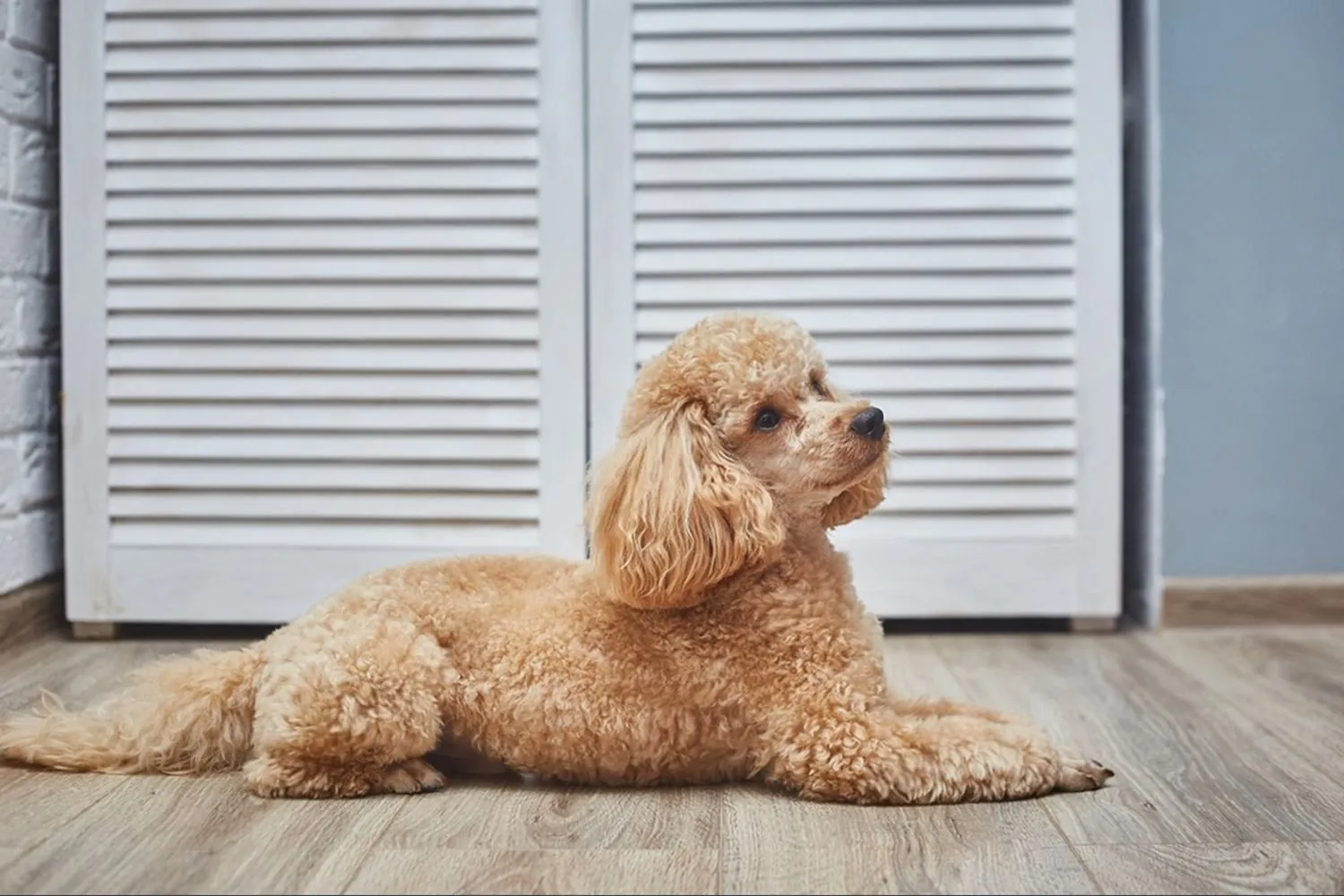
What is the lifespan of a Toy Poodle?
Toy Poodles are little longevity champions. Along with other small breeds like Yorkshire Terriers, Lhasa Apsos, Dachshunds, and Chihuahuas, they’re known for having some of the longest life expectancies often reaching 18-20 years. That’s a lot of birthdays, a lot of snuggles, and probably a few squeaky toys sacrificed along the way. I’ll never forget my friend’s Toy Poodle, Pixie, who rang in her 19th year with a slow motion zoomie and a tiny pup safe cupcake. She was small, but she ruled the house like a queen.
How long your Toy Poodle lives will depend a lot on lifestyle and diet, so the little daily habits really add up. I’ve seen big differences from simple choices: feed a high-quality, portioned diet, keep them lean, and make time for short, regular walks plus gentle play to keep muscles and joints happy. Mental stimulation is just as important puzzle toys, training games, even a scavenger hunt in the living room. Stay on top of vet checkups, dental care (toy breeds are prone to tartar), and grooming; clean ears and a mat free coat can prevent surprises later. I also keep steps by the couch to avoid those dramatic leap off the furniture moments. With steady routines, lots of love, and a bit of common sense care, you’ll stack the odds for many, many years together.
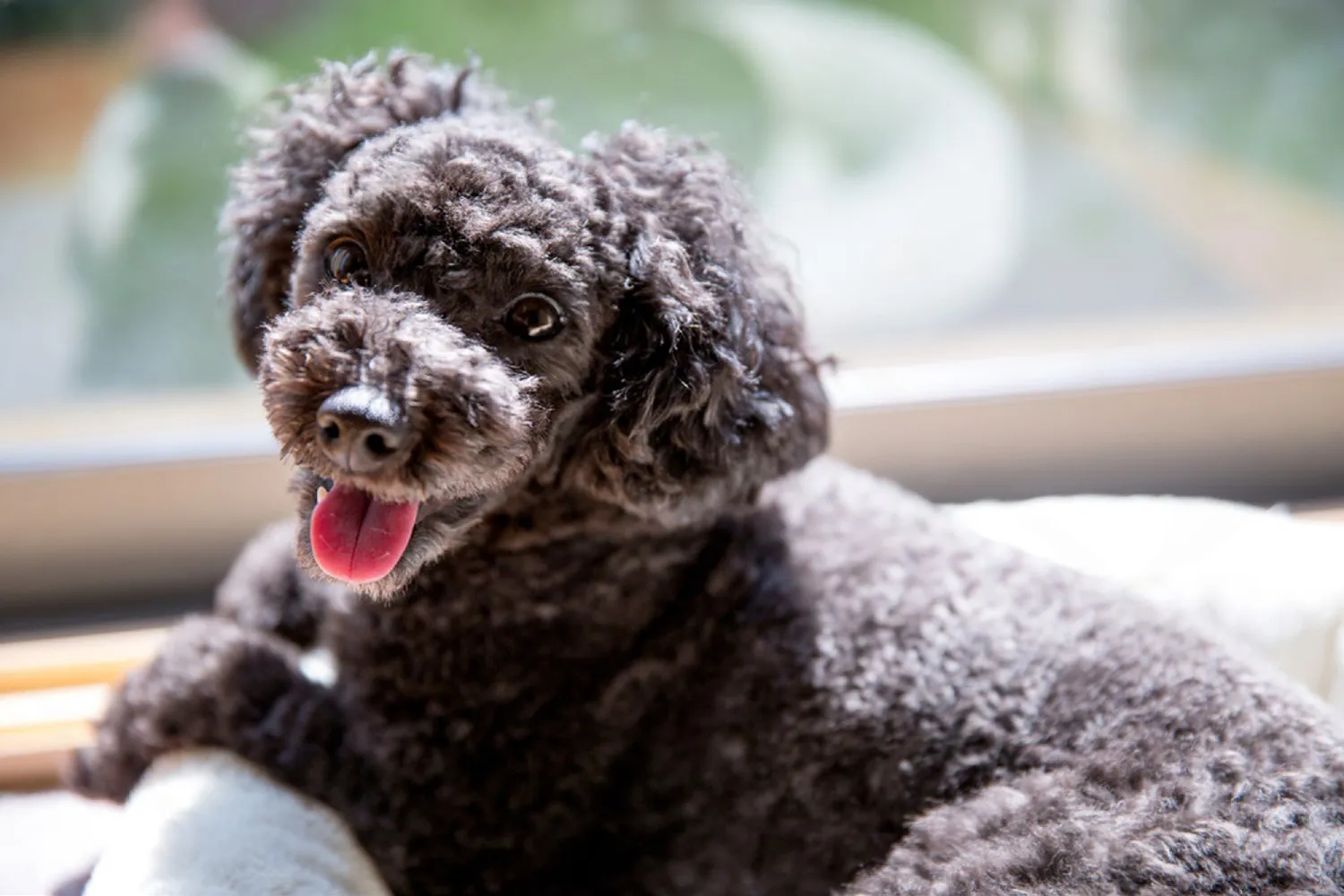
How Much Should a Toy Poodle Eat?
Compared with a Saint Bernard or Great Dane, feeding a Toy Poodle feels downright economical. These little charmers run on small, regular meals rather than big, heavy portions. My neighbor’s Toy Poodle, Poppy, was the ultimate “nibbler” she did best with several tiny meals spaced through the day to keep her energy steady and her tummy happy.
You’ll have plenty of food options: raw, dry, wet, or a mix. If you go with dry food, remember it only has about 6-10% moisture, so fresh water is non negotiable. I keep a small bowl on each floor of the house so nobody has to go far for a drink. Wet food, on the other hand, offers around 75% moisture, which can help with hydration. Just make sure you’re choosing a reputable brand that’s complete and balanced for your dog’s life stage. I like to check the feeding guidelines on the bag or can as a starting point, then adjust based on how my dog looks and feels.
As for how much, think “small amounts, more often.” Puppies usually need more frequent meals (three to four per day), while most adult Toy Poodles do well on two to three small meals. With one of my tiny adults about five pounds I split roughly half a cup of a calorie dense kibble into three meals and added a spoonful of wet food at dinner. That was our sweet spot, but every dog is different. Watch your Toy Poodle’s waistline, energy, and stool quality. You should be able to feel ribs without pressing hard and see a slight tuck at the waist. If treats are part of your routine (and let’s be honest, they usually are), keep them tiny and count them as part of the day’s calories.
A couple of practical tips: use a measuring cup so “a little” doesn’t become “a lot,” and consider a puzzle feeder for one meal a day Toy Poodles are clever, and it turns mealtime into brainwork. If you switch foods, do it gradually over 5-7 days to avoid tummy upsets. And keep a collapsible water bowl in your bag; I learned the hard way that little dogs can dehydrate quickly on warm walks.
The right diet really can boost your dog’s health and longevity, so it’s worth the small effort to get it right. If you’re unsure how often or how much your Toy Poodle should be eating for their age or health, check in with your vet. Bring the brand info and a list of treats you’ll get personalized guidance and peace of mind.
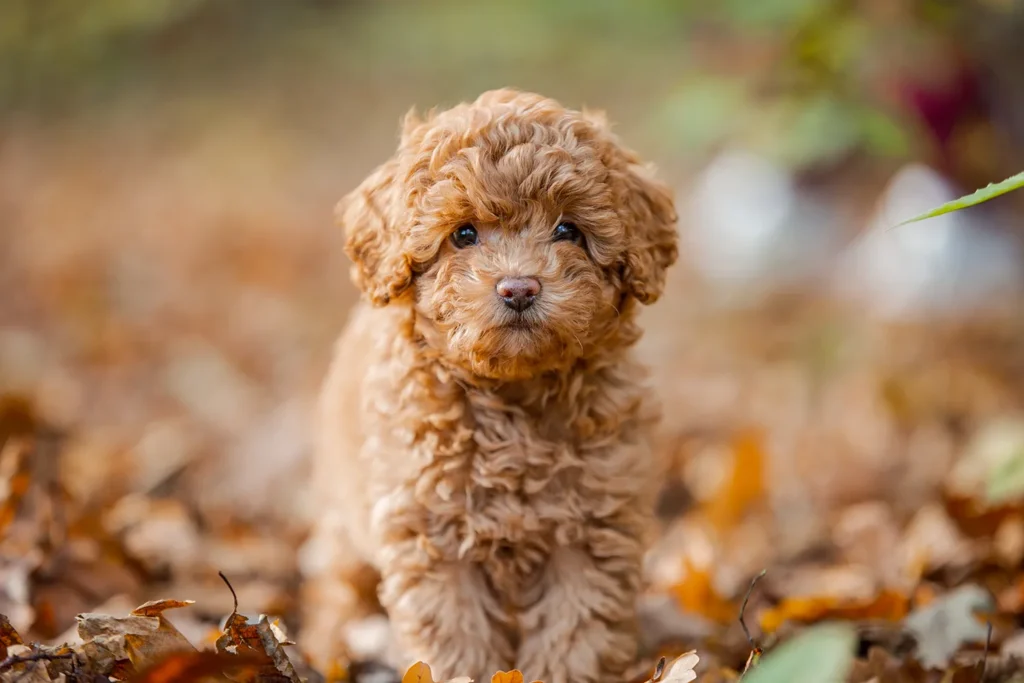
Toy Poodle FAQs
Is it true Toy Poodles require a lot of sleep?
Absolutely. Tiny bodies, big dreams! Your Toy Poodle puppy will likely snooze 15 to 20 hours a day, and that’s perfectly normal. When my pup, Clover, came home, she’d play hard for 20 minutes and then conk out under my desk like a little teddy bear. By the time they’re about a year old, most Toy Poodles settle into roughly 13 hours of sleep a day. Give yours a quiet, cozy spot to nap, and try not to wake them for cuddles overtired puppies get cranky and nippy. A simple bedtime routine helps too: quick potty, a calm cuddle, then lights out. You’ll thank yourself later.
How long does it take to house train a Toy Poodle puppy?
Toy Poodles are bright and eager to please, which is half the battle. On average, expect four to six months to fully house train, depending on your consistency and experience. I kept a timer on my phone the first few weeks outside after waking, after eating, after play, every two hours like clockwork. Crate training sped things up, and praise happened the instant paws hit the right spot. Expect a few setbacks during growth spurts or rainy weeks; that’s normal. Clean accidents with an enzymatic cleaner so they don’t re scent the area, and watch for those tiny tells: circling, sniffing, suddenly going quiet. One of my favorite tricks was a potty bell by the door Clover learned to nudge it within a week, and we’ve never looked back.
Are Toy Poodle puppies in high demand?
Yes, very. They’re small, cute, and generally quite a healthy breed with a long lifespan, which makes them a favorite for families and city dwellers alike. Their low shedding coats are a bonus for many households. A Toy Poodle is slightly smaller than a Miniature Poodle, and both sizes are extremely popular. Don’t be surprised by waitlists when we looked, I had to be patient and pass on a couple of litters to find the right fit.
Where can I find a reputable Toy Poodle breeder?
Start by making sure the breeder is registered with the Kennel Club. Ask to meet the breeding dogs in person so you can check their temperament and living conditions, and to be sure you’re not getting a mix when you want a Toy Poodle. A good breeder welcomes questions, shows health records, and is proud of how their dogs are cared for. I always ask about health testing relevant to Toy Poodles, like eye exams (for PRA) and patella checks, and I like to see a contract that explains health guarantees and a return policy. Red flags: puppies always available, reluctance to let you visit, no questions asked of you, or pressure to pay quickly. The right breeder will feel like a partner, not a salesperson.
Disclaimer:
This article is for informational purposes only and doesn’t replace professional veterinary or training advice. Always consult a certified vet or dog trainer for guidance specific to your pup.
